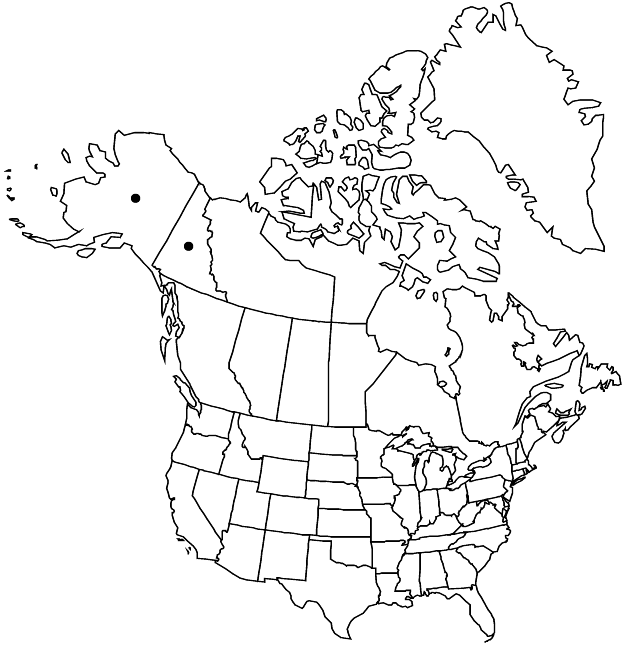Silene williamsii
Bull. New York Bot. Gard. 2: 168. 1901.
Plants perennial; taproot slender; rootstock much-branched. Stems several–many, decumbent to erect, much-branched and sometimes matted, leafy, 5–30 cm, pubescent and glandular, at least distally. Leaves 2 per node, leafy above, sessile; blade narrowly lanceolate to elliptic-lanceolate, broadest proximally, narrowed to base, 1–5 cm × 3–8 mm, apex acute, short-pubescent and ± glandular on both surfaces. Inflorescences cymose, loose, leafy, compound, or flowers terminal, axillary in distal nodes. Pedicels 0.5–1(–3) cm, glandular-pubescent. Flowers unisexual, all plants having both staminate and pistillate flowers; calyx obscurely 10-veined, ovate-campanulate, 9–11 × 4–6 mm, herbaceous, papery, pubescence rather dense, glandular, ± obscuring veins, veins slender, without conspicuous pale commissures, lobes lanceolate, ca. 2 mm, apex acute to acuminate; corolla white, clawed, claw shorter than calyx, limb oblong, 2-lobed, 1.5–3 mm, lobes lanceolate, apex acute, appendages linear, 0.3–0.5 mm; stamens equaling corolla; stigmas 3, slender, equaling corolla, papillate only at tip. Capsules straw colored, ovoid-ellipsoid, slightly longer than calyx, opening by 6 teeth; carpophore ca. 1 mm. Seeds dull brown, not winged, angular-reniform, ca. 1 mm, tuberculate. 2n = 24.
Phenology: Flowering summer.
Habitat: Heaths, disturbed ground, river gravel and bluffs, roadsides
Elevation: 100-700 m
Discussion
Silene williamsii is similar to S. menziesii but is readily separated by its leaves, which are broadest below the middle, its dull tuberculate seeds, and its stigmas, which are papillate only at the tip. It is also monoecious instead of functionally dioecious.
Selected References
None.
